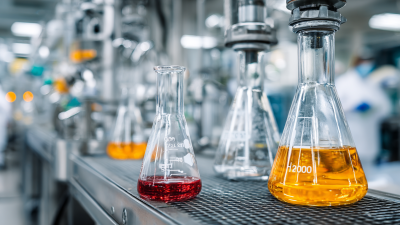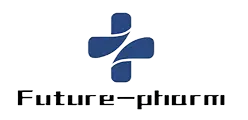
5 Essential Tips for Sourcing Quality Pharmaceutical Materials
In the highly regulated and competitive pharmaceutical industry, sourcing quality pharmaceutical materials is crucial for ensuring the safety, efficacy, and reliability of drug products. The process of procuring these materials involves careful consideration of various factors, including supplier reputation, material specifications, and compliance with industry standards. Pharmaceutical manufacturers face numerous challenges in identifying and securing high-quality raw materials, which can ultimately impact production timelines and product integrity.

This article aims to provide essential tips for navigating the complexities of sourcing pharmaceutical materials, highlighting best practices to minimize risks and enhance quality assurance. By understanding the intricacies of this essential aspect of pharmaceutical development, stakeholders can make informed decisions that contribute to the overall success of their products in a demanding marketplace.
Understanding Regulatory Requirements for Pharmaceutical Material Sourcing
When sourcing pharmaceutical materials, understanding regulatory requirements is paramount. Governments and international bodies have established strict guidelines to ensure the safety, efficacy, and quality of pharmaceutical products. Key regulations, such as those set forth by the FDA in the United States or the EMA in Europe, dictate the standards that raw materials must meet. This includes compliance with Good Manufacturing Practices (GMP), which stipulate how materials are handled, processed, and stored to avoid contamination and ensure consistency in drug production.

Moreover, it is essential to verify that suppliers provide materials that are certified and traceable. The documentation should indicate compliance with relevant regulations and standards, including Certificates of Analysis (CoA) for raw materials. Engaging with suppliers who have a strong regulatory compliance history not only reduces risks but also enhances the reliability of the supply chain. By prioritizing regulatory understanding, pharmaceutical companies can mitigate potential risks and ensure they maintain the highest standards of product safety and quality in their offerings.
Identifying Reliable Suppliers in the Pharmaceutical Industry
Identifying reliable suppliers in the pharmaceutical industry is crucial for maintaining quality and compliance in the drug manufacturing process. According to a report from IQVIA, approximately 70% of pharmaceutical companies experience challenges with their supply chains, primarily related to sourcing quality materials. This highlights the necessity for companies to establish stringent criteria when vetting suppliers. Assessing a supplier's certifications, such as Good Manufacturing Practices (GMP) and relevant ISO standards, is a foundational step in ensuring material quality.
Furthermore, industry data indicates that up to 30% of pharmaceutical companies fail to perform adequate assessments of their suppliers, leading to potential risks such as contamination or product recalls. It's essential to implement a robust supplier evaluation process that includes on-site audits, supplier history reviews, and financial stability assessments. Engaging with industry forums and leveraging the insights of organizations like the Pharmaceutical Supply Chain Initiative (PSCI) can also provide valuable information on trustworthy suppliers. As the landscape of pharmaceutical sourcing evolves, building strategic relationships with verified suppliers will remain a top priority for ensuring the integrity of pharmaceutical products.
Evaluating Quality Assurance Standards of Pharmaceutical Materials
Evaluating quality assurance standards for pharmaceutical materials is essential for ensuring safety and efficacy in drug manufacturing. One of the key aspects of this evaluation is the adherence to established guidelines and regulations. Pharmaceutical companies should implement robust quality management systems that encompass all stages of production, from sourcing raw materials to delivering finished products. This includes regular audits, compliance with Good Manufacturing Practice (GMP), and transparency in reporting quality metrics.
Furthermore, quality control tests play a critical role in assessing the integrity of pharmaceutical materials. These tests serve to identify contaminants, verify ingredient potency, and confirm the consistency of formulations. Advanced techniques such as High-Performance Liquid Chromatography (HPLC) and Mass Spectrometry (MS) can be employed to monitor quality throughout the production process.
By systematically evaluating and improving quality assurance standards, pharmaceutical companies can enhance trust and reliability in their products, ultimately benefiting patient safety and public health.
Establishing Strong Communication with Suppliers for Quality Control
Establishing strong communication with suppliers is crucial for ensuring the quality of pharmaceutical materials. According to a report by the International Society for Pharmaceutical Engineering (ISPE), nearly 70% of quality-related issues in the pharmaceutical industry stem from inadequate supplier relationships. Effective communication can help mitigate risks associated with material sourcing, which is essential given that over 30% of drug recalls are linked to quality failures in raw materials.
To enhance communication with suppliers, firms should implement regular performance assessments and be proactive in addressing potential quality control issues. A study conducted by PharmSource indicates that companies that maintain open lines of communication with their suppliers reduce lead times by up to 25% while improving compliance rates. Additionally, establishing clear expectations and sharing quality standards right from the start fosters a collaborative environment, enabling both parties to align their goals around product integrity and compliance with regulatory requirements. Strong supplier relationships not only improve quality outcomes but also drive innovation in sourcing practices.
Implementing Risk Management Strategies in Pharmaceutical Material Procurement
 Implementing effective risk management strategies in the procurement of pharmaceutical materials is increasingly critical given the complexities of today’s supply chains. With the ongoing threat of supply shortages and unforeseen disruptions, it is essential for pharmaceutical companies to adopt a proactive approach to risk management.
Implementing effective risk management strategies in the procurement of pharmaceutical materials is increasingly critical given the complexities of today’s supply chains. With the ongoing threat of supply shortages and unforeseen disruptions, it is essential for pharmaceutical companies to adopt a proactive approach to risk management.
One effective strategy is enhancing supplier collaboration through the integration of artificial intelligence (AI) in information management. AI can facilitate real-time insights into supply chain dynamics, enabling companies to anticipate risks and make informed decisions regarding procurement. By leveraging AI for demand forecasting and inventory optimization, organizations can significantly reduce the likelihood of material shortages.
Additionally, adopting a comprehensive risk assessment framework is vital. This could involve developing clear risk mitigation protocols and conducting regular evaluations of suppliers’ compliance with quality standards. Practical insights from pharmacists can also guide prospective risk assessments to identify potential medicine shortages before they occur. Overall, these tactics align with current trends of digitalization and data-driven strategies, empowering businesses to navigate the complexities of the pharmaceutical industry effectively.
Related Posts
-

How to Optimize Your Supply Chain for Drug Raw Material Sourcing and Compliance
-

Navigating the Future of Best Pharmaceutical Materials in 2025 and How to Stay Ahead
-

Unique Uses of Pharmaceutical Chemical Powder in Modern Medicine: Unveiling Real-World Applications
-

Benefits of Choosing Best Pharma Material for Your Business Success
-

How to Select the Right Pharmaceutical Chemicals for Your Manufacturing Process
-

7 Best Strategies for Sourcing High-Quality Pharmaceutical Intermediates in 2023
